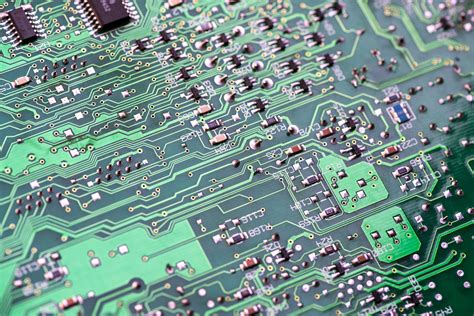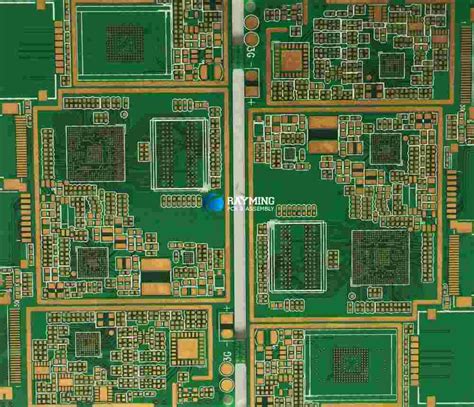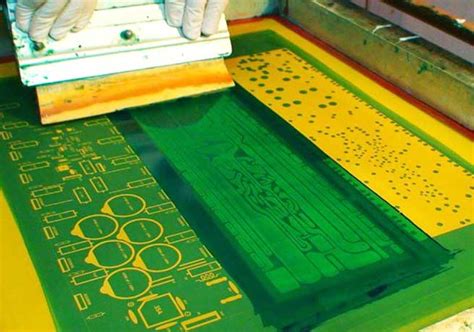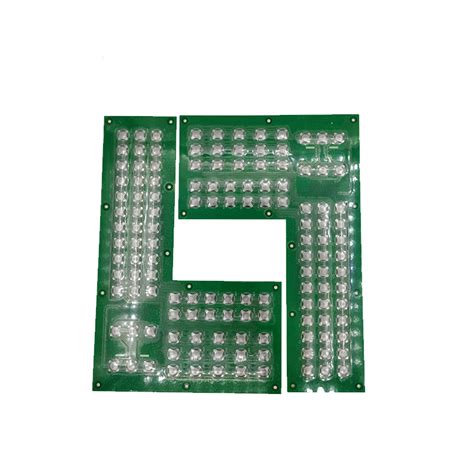Mastering Efficiency: The Art of Control Board Assembly
Key Takeaways
The world of control board assembly (often referred to as pcb assembly or pcba) is both intricate and essential for the success of electronic manufacturing. To effectively navigate this field, it is crucial to understand the fundamental principles that govern the assembly process. Firstly, being equipped with the right tools significantly enhances precision; tools such as soldering stations, multimeters, and surface mount technology (SMT) equipment are indispensable for achieving optimal results. Moreover, implementing best practices—like thorough component placement verification and systematic testing—can drastically improve efficiency in assembly processes. Embracing innovative techniques such as automation and using specialized software can help streamline control board production, allowing for faster turnaround times without sacrificing quality. Furthermore, maintaining robust quality control measures is vital in ensuring that each pcba meets the required standards before deployment. Addressing common challenges, such as potential component misalignments or solder defects, through proactive monitoring and corrective actions can avert costly errors. Lastly, keeping an eye on future trends in control board technology will provide insights into upcoming tools and methodologies that promise to enhance assembly efficiency even further. All these takeaways collectively underscore the importance of a strategic approach to mastering efficiency in control board assembly.
Understanding the Fundamentals of Control Board Assembly
Control board assembly, often referred to in the industry as pcb assembly or pcba, is a critical process in electronic manufacturing that requires a comprehensive understanding of various components and techniques. At its core, control board assembly encompasses the integration of multiple electronic components onto a printed circuit board (PCB), which serves as the backbone for any electronic device. Grasping the fundamentals entails familiarizing oneself with essential elements such as component placement, soldering methods, and circuit design.
One important aspect to consider is the significance of precision in every step of the assembly process. For instance, utilizing automated placement machines can drastically improve pcba accuracy by minimizing human error. Additionally, adopting advanced soldering techniques like surface mount technology (SMT) enhances conductivity and reduces the size of components, which is vital for modern compact devices.
| Fundamental Aspect | Description | Importance |
|---|---|---|
| Component Placement | Positioning components accurately on the PCB | Crucial for electrical connectivity |
| Soldering Techniques | Methods used to join electrical components to the PCB | Ensures durability and reliability |
| Circuit Design | The layout of electrical pathways on a PCB | Affects overall device performance |
Understanding these fundamentals empowers manufacturers to not only create efficient pcb assembly processes but also to innovate new methods that can lead to enhanced performance and reduced costs. By mastering these principles, one can achieve remarkable efficiency that elevates the overall quality and functionality of electronic products.
Essential Tools for Precision in Control Board Assembly
In the realm of pcb assembly, precision is paramount. This is where the right tools play a critical role in achieving high-quality pcba results. A well-equipped workstation should include a variety of essential instruments such as soldering stations, reflow ovens, and automated pick-and-place machines. Each tool serves a unique purpose; for example, soldering stations are crucial for applying solder in a controlled manner, ensuring that connections are both strong and efficient. Automated pick-and-place machines significantly enhance assembly speed, allowing components to be placed accurately and quickly onto the circuit board.
Additionally, the use of test equipment is indispensable in verifying the integrity and functionality of the assembled board. Multimeters, oscilloscopes, and automated test equipment (ATE) can help detect potential issues early in the process. Furthermore, maintaining suitable workspace conditions—such as clean environments free from static discharge—is fundamental to prevent component damage.
“Investing in high-quality tools not only improves assembly precision but also reduces long-term operational costs,” a manufacturing expert suggests.
Overall, implementing these essential tools within your workflow will ensure that your control board assembly process yields superb products while enhancing overall efficiency.
Best Practices to Enhance Efficiency in Assembly Processes
In the realm of pcb assembly, enhancing efficiency is paramount for achieving optimal performance in electronic manufacturing. One essential best practice is to adopt a systematic approach to the pcba workflow, ensuring that each step is carefully planned and executed. Utilizing advanced technologies, such as automated pick-and-place machines, can significantly reduce assembly time while improving accuracy. It’s crucial to implement thorough training programs for operators, focusing on the nuances of handling components and soldering techniques to minimize defects. Additionally, establishing a clean and organized workspace can enhance focus and speed during assembly processes. Regular maintenance of equipment also plays a vital role; consistently checking for wear and tear can prevent costly downtimes that impact production timelines. By combining these practices with an emphasis on collaboration among team members, manufacturers can develop a streamlined assembly process that not only enhances efficiency but also elevates the overall quality of the pcba products being produced. Ultimately, prioritizing these best practices will lead to reduced waste and increased reliability in control board assembly operations.
Innovative Techniques for Streamlining Control Board Production
In the realm of pcb assembly, enhancing efficiency is paramount for achieving excellence and maintaining competitiveness. Incorporating innovative techniques into control board assembly processes not only reduces production time but also ensures higher quality outputs. One effective approach involves utilizing automated assembly systems that minimize human error and accelerate the placement of components on the pcba. Advanced software applications enable precise tracking of component placement, further enhancing accuracy. Additionally, adopting modular design principles allows manufacturers to create interchangeable sections that can be produced independently, thus streamlining the overall workflow. Embracing 3D printing technology for rapid prototyping provides valuable feedback early in the design stage, allowing for adjustments before mass production begins. A focus on standardization across various stages of production can significantly cut down on setup times and foster consistency in product quality. By integrating these cutting-edge methods, companies can dramatically improve their control board assembly processes, ensuring their pcba products meet market demands with optimum performance and reliability.
Quality Control Measures in Electronic Manufacturing
In the realm of pcb assembly, quality control is paramount to ensure the reliability and effectiveness of the final product. Implementing robust quality control measures can significantly influence the performance of pcba by identifying defects at various stages of the assembly process. One effective strategy involves conducting thorough inspections of component placement and soldering techniques, which are critical in avoiding issues such as cold solder joints and misplaced components. Additionally, utilizing advanced testing equipment, such as automated optical inspection (AOI) systems, can facilitate rapid identification of defects. These systems compare the physical assembly against predetermined specifications, ensuring that each board meets industry standards.
Moreover, employing statistical process control (SPC) allows manufacturers to monitor production processes in real-time, enabling proactive adjustments before defects occur. Regular audits and reviews of assembly methodologies ensure that any emerging challenges in control board assembly are swiftly addressed. Training personnel involved in the pcba process is equally vital; it cultivates a culture of quality awareness that emphasizes the importance of precision and adherence to best practices. Ultimately, a commitment to meticulous quality control not only enhances efficiency but also reinforces a manufacturer’s reputation for excellence in electronic manufacturing.
Analyzing Common Challenges and Solutions in Assembly
In the realm of pcb assembly or pcba, practitioners often face a myriad of challenges that can impede the assembly process. One significant issue is the complexity of layouts, which can lead to increased error rates if not addressed properly. To overcome this, investing in advanced design software that allows for detailed visualization and simulation before physical assembly can drastically reduce mistakes. Another common challenge is sourcing high-quality components. Inconsistent quality can affect overall performance, making it vital to establish reliable supplier relationships and engage in stringent quality control measures. Additionally, managing time constraints is crucial; therefore, employing techniques such as Lean Manufacturing principles streamlines workflows and optimizes resource utilization. By prioritizing continuous training for assembly personnel, companies can enhance skill levels and response times when problems arise during assembly. Ultimately, addressing these challenges not only mitigates risks but also fosters an environment conducive to efficiency in control board assembly, ensuring a smooth path toward superior product outcomes.
Future Trends in Control Board Technology and Assembly
As the electronics manufacturing landscape continues to evolve, several trends are shaping the future of control board assembly (pcb assembly). One of the most significant shifts is the growing integration of automation and robotics in the pcba process. These technologies not only enhance precision but also significantly reduce production time, leading to greater efficiency. Additionally, as miniaturization becomes more common, manufacturers are adopting advanced techniques such as surface mount technology (SMT) to accommodate smaller components without compromising performance. Innovations in materials used for both substrates and soldering processes are also on the rise, leading to improved durability and functionality of electronic devices.
Moreover, data analytics is emerging as a powerful tool in pcb assembly, allowing companies to monitor and optimize their processes in real-time. This helps in identifying bottlenecks and implementing corrective measures swiftly, thereby maintaining a high standard of quality control. The trend toward sustainability is also influencing control board technology, with many manufacturers seeking eco-friendly materials and recycling methods for electronic waste.
The convergence of these trends reflects an industry that is not only focused on enhancing efficiency but also committed to innovation and sustainability in control board assembly. As these technologies continue to develop, they promise to transform how electronic components are manufactured, ensuring that future generations of devices are more reliable and efficient than ever before.
Case Studies: Success Stories in Efficient Control Board Assembly
In the realm of pcb assembly, success stories abound that showcase the profound impact of efficient pcba processes on overall production outcomes. One notable case involved a mid-sized electronics manufacturer that implemented a state-of-the-art control board assembly technique. By integrating advanced automation and optimizing workflow, they drastically reduced assembly time by over 30%. This achievement not only enhanced productivity but also minimized the occurrence of errors, leading to a remarkable increase in product quality. Another compelling example comes from a company specializing in automotive electronics, which adopted flexible manufacturing systems. This approach enabled them to swiftly adjust to varying production demands while maintaining precision in their control board assembly operations. The result was a 25% increase in efficiency, allowing them to meet tight market deadlines without sacrificing quality or reliability. These case studies underline the significance of leveraging innovative techniques and best practices in pcba, ultimately guiding businesses toward successful outcomes and a competitive edge in the electronic manufacturing landscape.
Conclusion
In summary, the art of control board assembly is essential for ensuring the functionality and reliability of electronic devices. By understanding the fundamentals of pcb assembly and the crucial role it plays, manufacturers can achieve remarkable efficiency and precision in their processes. Implementing best practices not only enhances throughput but also mitigates the risks associated with common challenges in pcba production. Moreover, leveraging innovative techniques can streamline workflows, enabling teams to meet growing demand in a competitive landscape. As the field evolves, staying informed about future trends in control board technology will empower manufacturers to adapt and excel. Ultimately, mastery of control board assembly is a continuous journey that involves embracing new tools and methodologies while prioritizing quality control to deliver superior products that meet or exceed customer expectations.
FAQs
What is control board assembly (CBA)?
Control board assembly, commonly known as PCB assembly or PCBA, is the process of constructing electronic circuits by mounting components on a printed circuit board (PCB). This involves the precise placement and soldering of electronic components to ensure reliability and performance.
What are the essential tools for control board assembly?
The essential tools for effective control board assembly include soldering irons, solder paste printers, pick-and-place machines, and reflow ovens. These tools help achieve high levels of precision in the installation of components on the PCB.
What best practices enhance efficiency in PCB assembly processes?
To enhance efficiency in PCB assembly, best practices include thorough planning and layout design, regular maintenance of equipment, training for skilled laborers, and the use of automation technology wherever feasible. Implementing these practices can lead to reduced production times and increased output quality.
What innovative techniques can streamline control board production?
Innovative techniques such as using advanced software for simulation and modeling, 3D printing for prototypes, and automated inspection systems significantly streamline production. Techniques like these not only improve speed but also increase accuracy during the PCB assembly process.
How important are quality control measures in electronic manufacturing?
Quality control measures are crucial in electronic manufacturing as they help ensure that each assembled PCB meets safety standards and functional requirements. Rigorous testing methods like electrical testing or X-ray inspection help identify defects before products reach consumers.
What are some common challenges faced in control board assembly?
Common challenges in control board assembly include component misalignment, improper solder application, and material handling issues. These challenges can lead to increased production costs and delays if not addressed promptly through effective planning and quality assurance processes.







